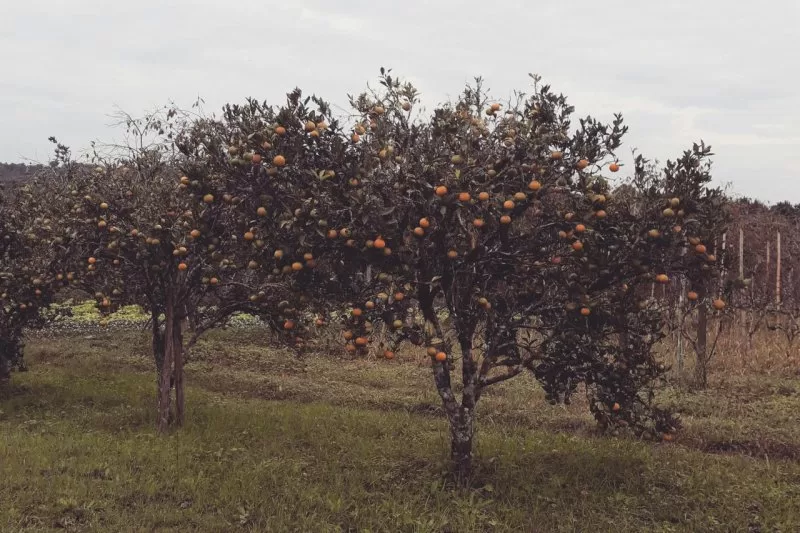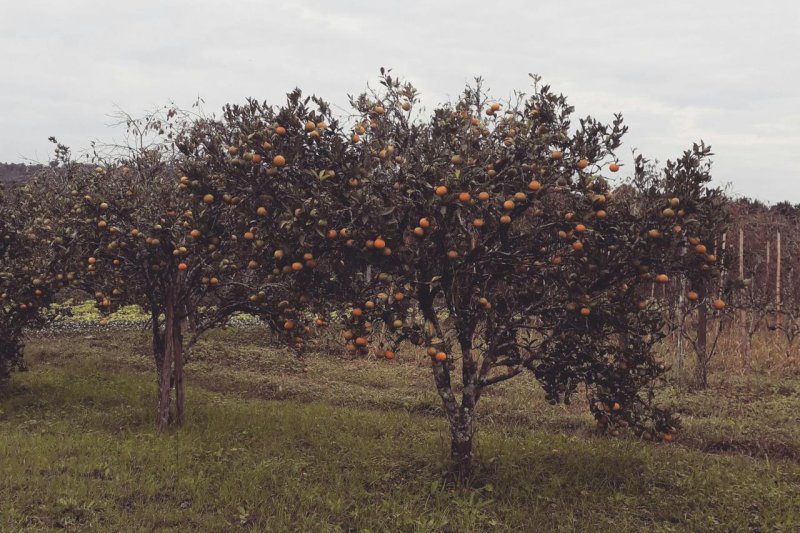Oct. 29 (UPI) — Nearly three weeks after deadly Hurricane Milton tore through Florida’s prime citrus producing region, industry leaders are still assessing how big a hit already ailing growers may have absorbed, although many are optimistic a worst-case scenario was averted.
Orange and grapefruit producers had just barely recovered from 2022’s Hurricanes Ian and Nicole and were already facing an upcoming growing season in which orange production was expected to plunge by 16% when Milton arrived Oct. 9.
The storm blasted directly through Florida’s Citrus Belt, including Polk, Highlands, Hardee, Polk, Desoto, and St. Lucie counties, damaging trees, blowing fruit off branches, producing downpours and spawning deadly tornadoes, including a twister in St. Lucie County that killed six people and significantly damaged an iconic family-owned citrus business.
An initial estimate by the Florida Department of Agriculture and Consumer Services issued Oct. 17 put the statewide crop and infrastructure losses from Milton at between $1.5 billon and $2.5 billion.
That number didn’t separate out citrus losses from other crops, but the agency noted the majority of the state’s citrus acreage was in Milton’s path and that “significant production losses” are expected.
That figure added to more than $1.5 billion in damage already sustained by Florida’s $8.88 billion agricultural sector from Hurricanes Helene, Debby and Idalia in the past 13 months. The citrus industry in Florida constitutes nearly $7 billion of that total and employs more than 32,000 people.
Tree mortality feared
Most of the losses from Milton, state officials said, are due to fruit drop, damage to branches, and impacts from heavy precipitation and flooding. Growers also reported heavy infrastructure damage and voiced “major concerns” of flood-caused tree mortality in the near future.
Now, nearly three weeks later, fruit drop remains an issue as growers continue to get a handle on the storm’s impact. Because of the nature of fruit-bearing trees, it will be several years until growers can properly assess their damage from Milton, said Matt Joyner, executive vice president and CEO of Florida Citrus Mutual, the state’s largest citrus growers’ trade association.
“Regardless of how this season overall ends up, regardless of what the ultimate loss of fruit is in this season, it’ll be a multi-year process for these trees to get back to pre-hurricane production. That’s how trees react to stress, and it’s very different than row crops that you plow under at the end of year,” Joyner told UPI.
“We are continuing to see some fruit hit the ground. It’s not what we’d hoped for, but certainly what you’d expect. We’re a couple weeks out now, and everybody is taking a look at their operations, looking at what remains of their crop for this growing season.
“Our suspicion is that as you get through the season, growers can then make decisions [on their futures] based on their individual merit.”
It’s a future that by some important measures doesn’t seems very sunny, at least judging by recent developments. In many respects, it’s not Hurricane Milton alone that produced the “perfect storm” for Florida’s citrus industry, but rather a series of events since 2017 that also include the march of endemic “greening” disease, a freeze in January 2022, rock-bottom fruit prices and skyrocketing input prices.
Yield per acre plunges
As a result, orange yield per acre in Florida, which has been declining overall for nearly 20 years, has plunged a further 30% since 2017, according to University of Florida research cited by the state citrus industry.
Undoubtedly the biggest culprit is Huanglongbing, or HLB, also known as citrus greening, a bacterial infection that affects citrus trees and is one of the most serious citrus diseases in the world. The industry says orange yield in Florida has decreased by more than 80% since HLB was first found in the state in 2005.
The bacteria is spread by Asian citrus psyllids and causes citrus trees to become unproductive and fruit quality to decline. In sweet oranges, for example, the fruit of diseased trees tend to stay green and produces bitter-tasting juice, which diminishes marketability but poses no consumer danger. Infected trees cannot currently be cured, according to the U.S. Department of Agriculture.
In recent years, some new strategies have emerged to combat HLB, such as peptide sprays and hot water treatments.
“We’ve been dealing with citrus greening for almost two decades, which is caused by an invasive species that was brought in probably through the southern ports of Florida, which is something our growers, through no fault of their own, have been dealing with,” Joyner said.
“And now that we’re getting some new tools to help these affected trees get back to health and productivity, we’re being beset by multiple hurricanes.”
The USDA’s annual Commercial Citrus Inventory showed total citrus acreage in Florida stood at 275,000 acres as of August, down 17% in one year with a net loss of nearly 58,000 acres.
Production declines forecast
Meanwhile, the 2024-2025 Florida all-orange forecast compiled by the USDA before Milton struck had already forecast steep declines in production, down to 15 million boxes, a 16% plunge from last season’s final production.
Amid all the discouraging statistics, one of the less tangible effects of Milton on the citrus industry is the morale of the growers themselves. Images of torn up fruit trees and stories of farmers facing destruction have filled the airwaves, creating a further sense of doom.
The most prominent example of that may be the historic Al’s Family Farms in Fort Pierce, Fla., revered around the country as an iconic throwback to the way Florida looked in the days of “wall to wall” citrus stands dotting highways along the state’s Citrus Belt. Its “Big Red Barn” on Kings Highway attracted tourists with offers of free samples of fresh-squeezed orange juice.
But on Oct. 9, the barn’s second floor was badly damaged during the deadly tornado outbreak spawned by Milton.
Third-generation owners Jeff and Matt Schorner vowed they wouldn’t let the storm stop them, telling WPTV-TV in West Palm Beach, “We’re not quitters, we work our butts off, there’s hard work, sweat and tears poured into this. We just don’t know what we’re going to do.”
On Oct. 24, they informed customers they are “quickly completing repairs” on the farm’s smaller “Little Red Barn” so that “Al’s Store can continue operating over there until the major repairs to the Big Red Barn’s 2nd floor are completed and we’re moved back in.”
There were also glimmers of optimism over growing evidence that despite Milton’s fury, early indications pointed to less severe damage than originally feared, especially when compared with the toll taken by Hurricane Ian two years ago.
Unlike that disaster, the damage from Milton seemed more confined to downed branches and fruit, rather than the complete uprooting of trees as seen in 2022.
“Damage is significant, but I thought it would be more,” Polk County Citrus Extension agent Chris Oswalt told Citrus Industry Magazine.
“For trees with healthier canopies, I did not see the extent of fruit drop and defoliation I expected. Some younger trees got blown around, but a lot of them hung in there really well.”








